WARNING FROM SPACE (1956)
An alien takes the form of a popular female singer to warn the citizens of Tokyo about a deadly meteor headed for Earth.
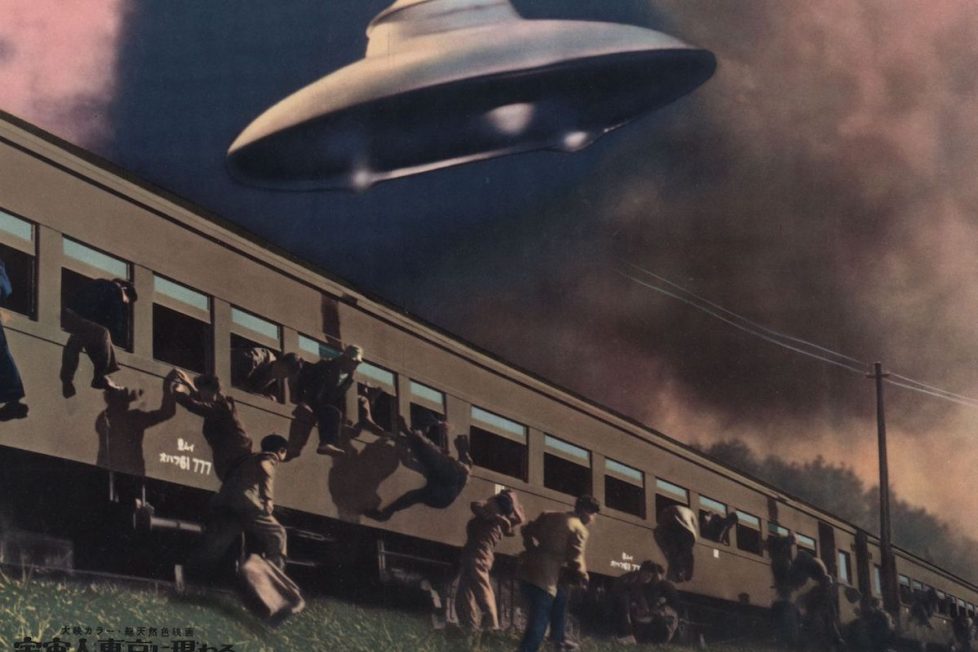
An alien takes the form of a popular female singer to warn the citizens of Tokyo about a deadly meteor headed for Earth.


In the 1950s people thought mankind was on the verge of annihilation. The bombings of Hiroshima and Nagasaki in 1945 offered a glimpse into nuclear armageddon; an attack so apocalyptic it remains the only use of nuclear arms in war.
Japanese cinema was incredibly reactive during the country’s early onset of grief and restoration, with their science fiction stories tackling the oppressive threat of further disasters. Toho achieved global success with Gojira (1954), released as Godzilla: King of the Monsters in the US, an unstoppable titan birthed from nuclear fallout and fuelled by the vengeful spirits of those lost to the bombing (in some canon). Toho is one of the ‘Big Six’ of Japanese cinema, but another company, Daiei, was competing with not only a more progressive message but the country’s first colour sci-fi feature.
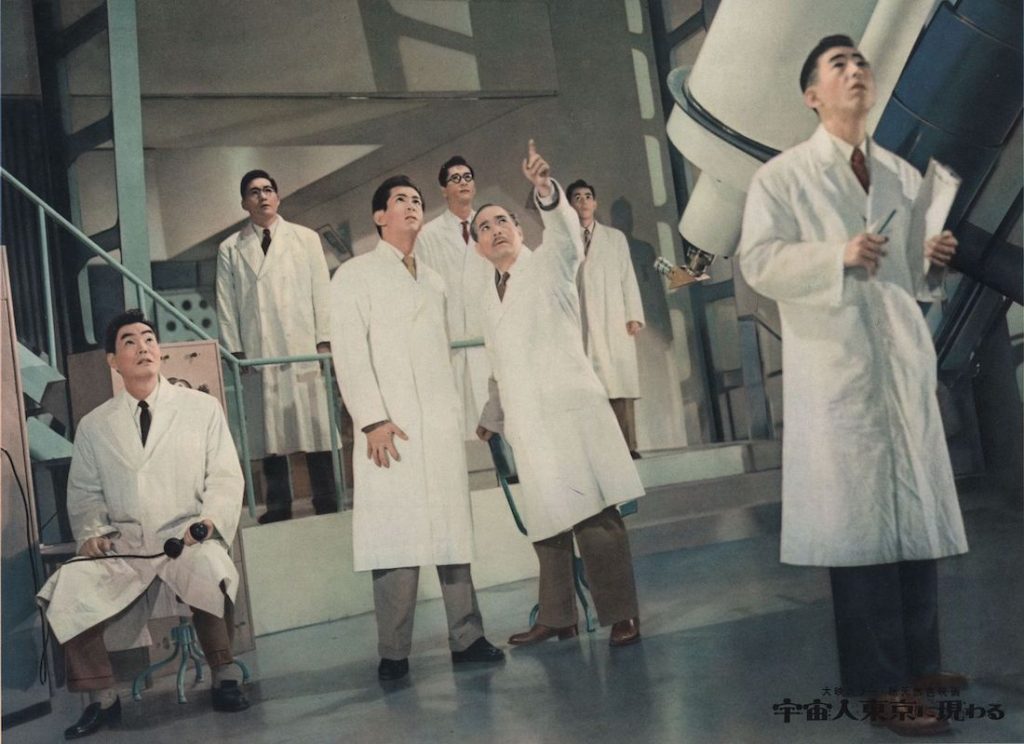
Warning from Space (宇宙人東京に現わる) didn’t follow in Godzilla’s colossal footsteps and a delayed US release, dubbed and recut, was found under numerous titles until falling into the public domain. Now, Arrow Video is releasing the definitive edition restored in beautiful high-definition with both the US version and, for the first time ever, an official release of the original Japanese presentation.
Japan witnesses mysterious UFOs across the skies, which grab the attention of scientists in a Tokyo observatory who are later visited by the craft’s strange starfish-like alien inhabitants after taking human form. While these scientists band together to discover the intent of the visitors from outer space, they unwittingly become Earth’s best chance of survival after receiving a shocking warning from space that destruction from above is imminent.
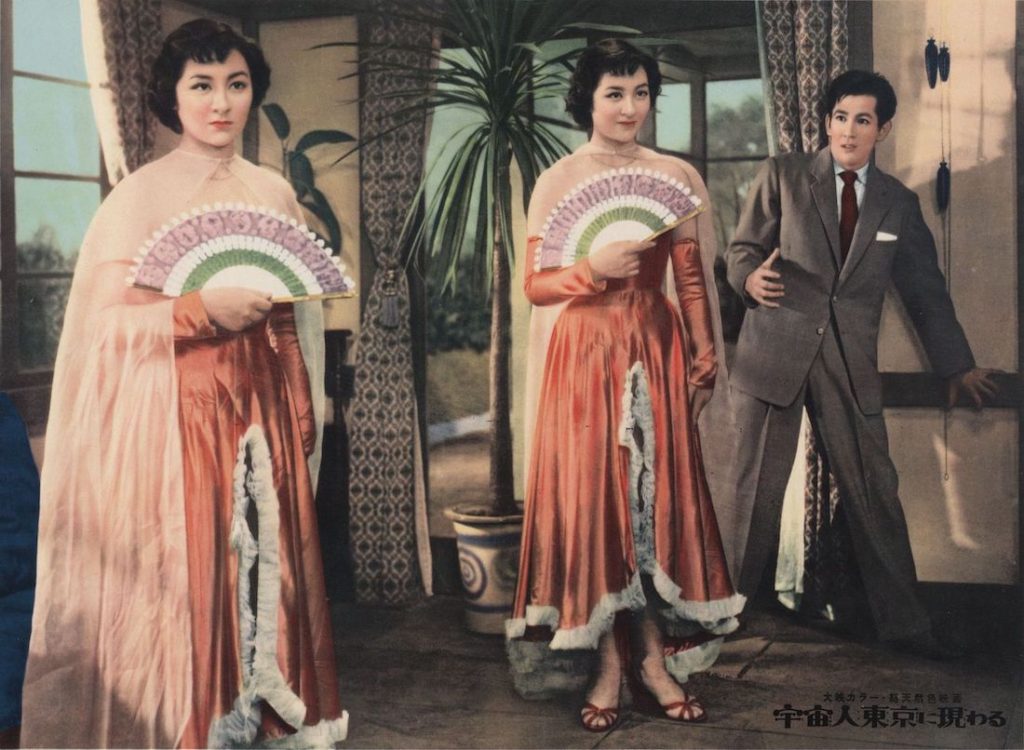
Any MST3K-heads out there may have seen Warning from Space with a teasing commentary, as there are strong cheese factors familiar from many other monster movies of the time. But Arrow’s Blu-ray presentation, bundled with an insightful new commentary track, sheds a respectful light on the major talents involved, as well as context on the growing Japanese film industry of the 1950s.
Warning from Space isn’t to mistaken as B Movie trash. Director Koji Shima was a fast-rising star in his field—with a ‘Best Film’ award at the Asia-Pacific Film Festival in 1954, and an entry in the 1956 Cannes Film Festival. This movie won awards for ‘Best Visual Effects’, ‘Sound’, and ‘Cinematography’ at the Asia-Pacific, too. Both Shima’s direction and Kimio Watanabe’s colour photography is on gorgeous display in Arrow’s HD restoration—from the beautiful landscapes to its intricately decorated interiors.
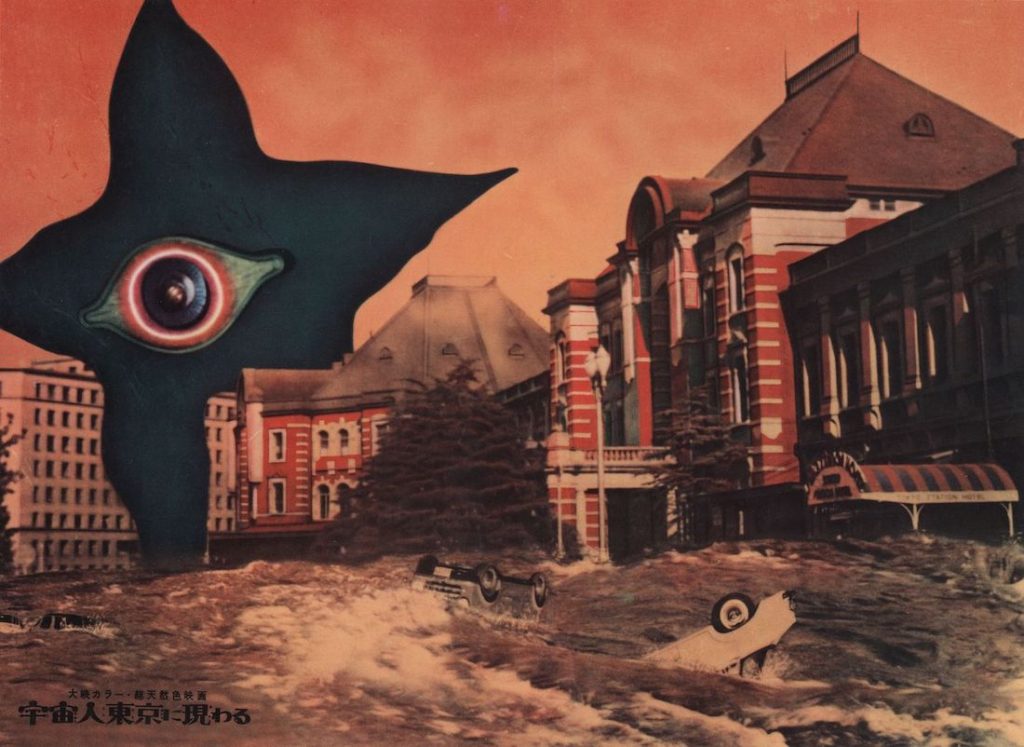
While other issues may distance audiences, there’s a wonderfully cosy atmosphere throughout that’s amplified by the spectrum of colour. Japanese directors like Hayao Miyazaki and Yasujirō Ozu are famed for creating ambient moods and Shima is of a similar pedigree. What’s more, there’s exceptional staging, with characters rarely standing in a dull medium close up delivering dialogue. Shima injects everything with frequent motion in either the foreground or background.
Explored in Stuart Galbraith IV’s (Monsters are Attacking Tokyo!) attendant commentary, Shima poses an intriguing insight into Japanese culture. World War II saw dramatic generational changes as traditional ways were literally destroyed and replaced with western influences; less seen are the fusuma sliding doors or characters sitting in the seiza style, instead Warning from Space has scientists with modern furnishings watching TV (which at the time were in less than 4% of all households.) Rashomon’s praise in America garnered expectations of period-set Japanese cinema and yet filmmakers were using sci-fi to anchor their films in the cutting-edge.
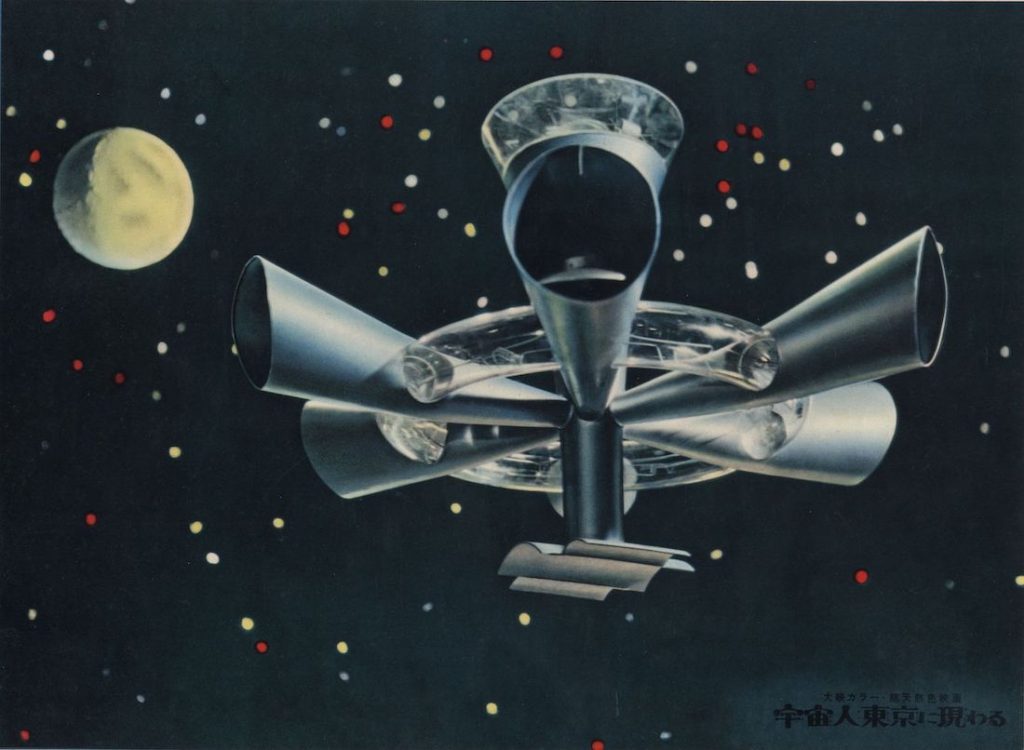
However, while a stunning restoration visually, the film does have its problems. Also acknowledged by Galbraith, the pacing is lackadaisical at the best of times. The first act is a measured alternation of humans discussing the prospect of alien life and those same aliens considering a peaceful approach, but when events come to a boil, the narrative remains hampered with unimportant moments (such as teenagers calling out to the aliens in disbelief) which offers nothing of substance. Worse is when the cataclysmic threat appears literally on the horizon and the aliens are mysteriously absent just when they’re most needed—which is dumbfounding after scenes of them wasting time with games of tennis to infiltrate human society.
The contextual packaging from Arrow is what makes the dry expository script all the more surprising, as screenwriter Hideo Oguni wrote 12 of Akira Kurosawa’s most renowned films and became “Japan’s most expensive screenwriter.” The man was so famous he had script veto powers over geniuses like Kurosawa on his own movies. This makes the structural imbalances all the more fascinating, shifting Warning from Space from amusing sci-fi romp into a curious case of film legends attempting something strange and different.
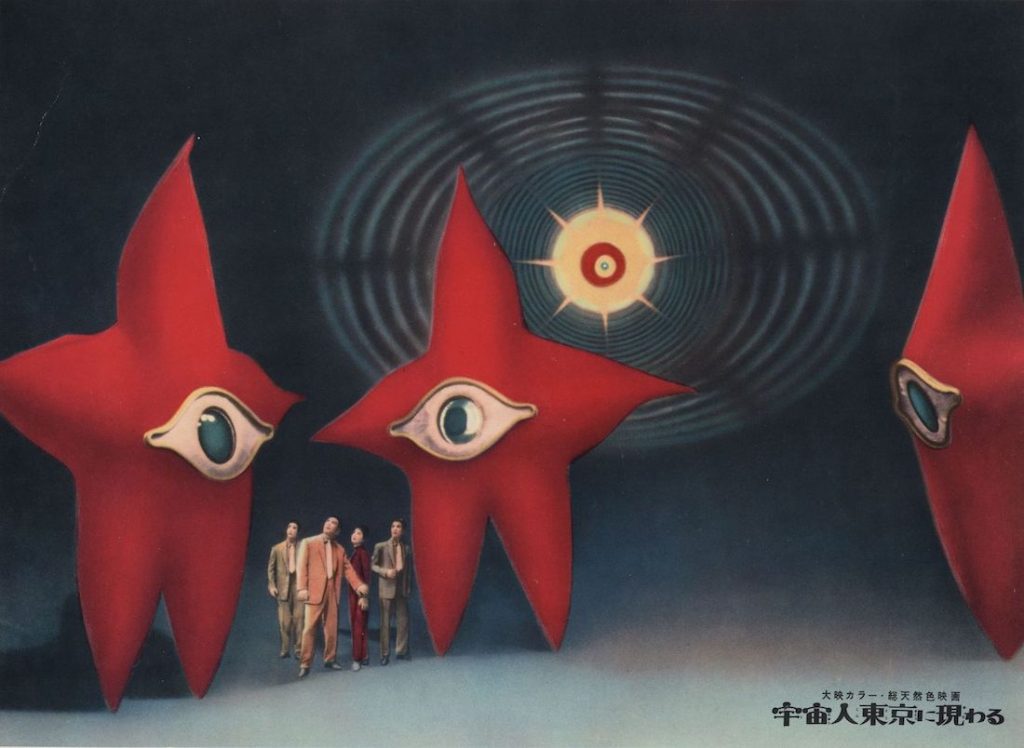
Contrast with the unrelenting monochromatic despair of Gojira, and it’s clear Shima and Oguni present a largely optimistic nature with their benevolent aliens. And that’s emphasised by the Japanese knowing only they have felt the destructive power of nuclear energy first-hand. Even cleverer is the consequent tension of Tokyo then tasked with convincing the world to unite their nuclear arsenal as a means to prevent an incoming natural disaster from the heavens. At the time, Japan was excluded from the UN, posing a challenge in cooperation, especially as nations could be wary of potential revenge if they hand their nukes over to Japan. As we learn to trust the alien visitors, we must learn to trust each other.
Of course, I’ve hardly touched on the aliens themselves and you’ve most likely seen their designs by now. They’re goofy! Real goofy. Actors waddling around in grey pyjamas modelled after Patrick Star and, for something that attracts so many in hopes of hilarious cheese, they only truly appear for the first act and then transform into human form. The design came from famed surrealist Taro Okamoto and stars and eyes prevail through most of his art and it’s been expressed that Japanese artists strive for striking visuals over a western insistence on realism. The film seems to acknowledge their ridiculousness. As initial witnesses scream in terror, the aliens ponder “they scatter in fear as if they had seen something monstrous” and then wonder “are we considered hideous?” No! You’re adorable and I can’t believe we hurt your feelings.
Warning from Space might not be the simple entertainment one expects but it provides a significant creative response to global changes, filled wit complicated and thought-provoking questions in uniting the planet for the next big event. Even if that event brings funny looking starfish from outer space.
JAPAN | 1956 | 87 MINUTES • 88 MINUTES (DUBBED) | 1.37:1 | COLOUR | JAPANESE

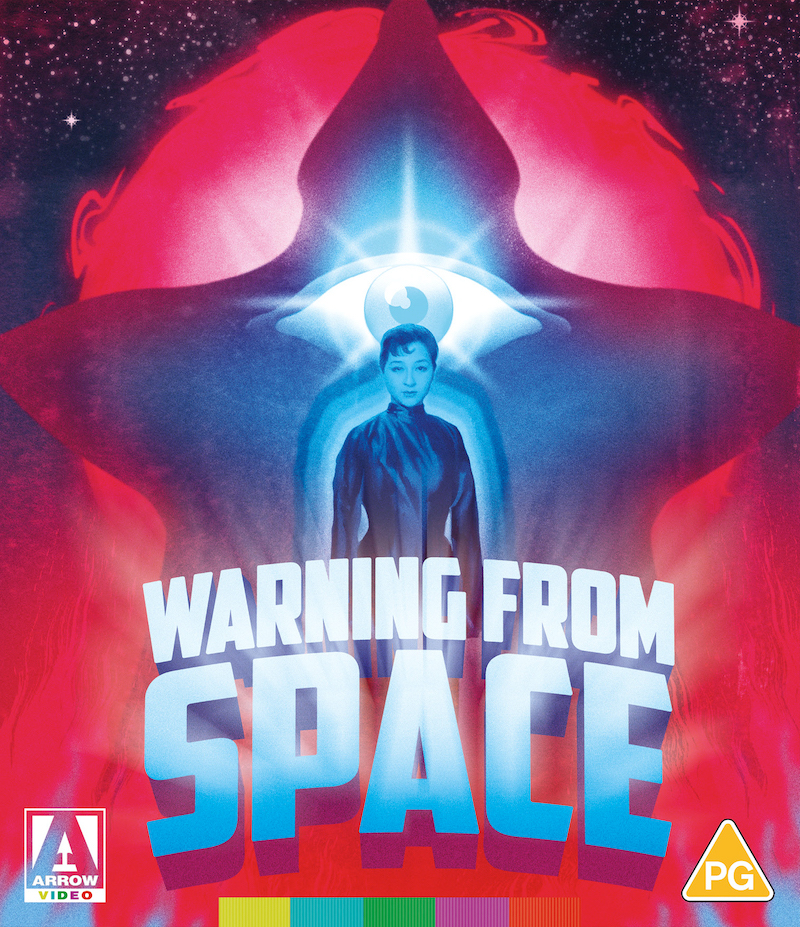

director: Kôji Shima.
writer: Hideo Ogunu (based on the novel by Gentaro Nakajima; English dialogue by Jay Cipes & Edward Palmer).
starring: Keizo Kawasaki, Toyomi Karita, Bin Yagasawa, Shozo Nanbu, Bontarô Miyake, Mieko Nagai, Kiyoko Hirai & Isao Yamagata.
